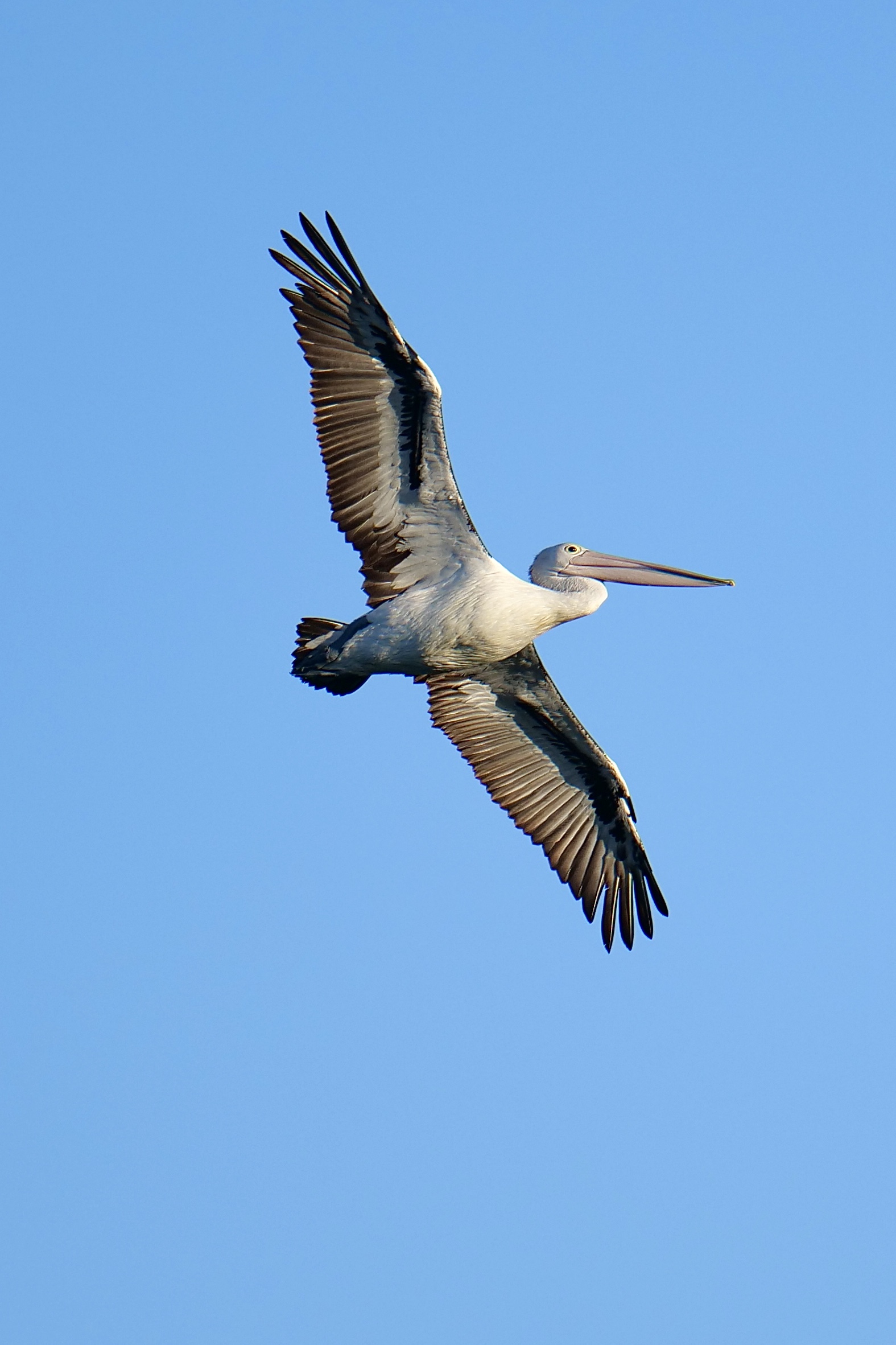The lives of most flying birds are fast-paced and make tremendous physical demands upon them.
A robust framework is essential, but the bird skeleton also needs flexibility and to be light enough for flight.
Marianne Taylor (quoted above) also observes:
A bird’s wing corresponds to a quadruped mammal’s foreleg or the human arm.
The pictured pelican was “climbing” the thermals, upon his or her departure from Lake Monger.
Pelicans are masters of the art of “letting thermals do much of the otherwise-hard work”
Photo is copyright Doug Spencer, taken at 6.49 pm on New Year’s Day.
The final post in this little series will include the necessary details of the book which is quoted in posts #8 through #11.
Australian pelicans – “our” land’s only pelican species – are one of “our” planet’s seven pelican species.
With thermals’ assistance, pelicans can stay aloft for at least 24 hours, and cover hundreds of kilometres in a single flight; they commonly reach1,000 metres, and can soar to more than 3,000 metres.
As tomorrow’s post illustrates, they are also masters of very low flight.
You can discover more about Pelicanus conspicillatus here.
